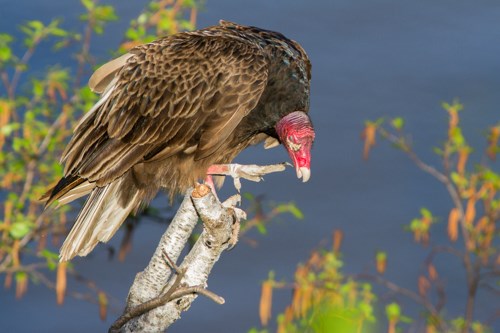
NPS/Gordon Dietzman IntroductionDead animals. Smelly carcasses. Sorry sights. We’ve all seen dead animals on the side of the road after they were struck by vehicles. It's not a pleasant sight, but have you ever wondered what happens to the bodies of animals that die? One answer to this question may be turkey vultures. These large birds don't usually kill their own food but rely on disease, predators, and careless drivers to provide them with the carcasses on which they feed. As a result, they often are associated with death. When turkey vultures eat a carcass, however, they are doing the environment a favor by preventing the possible spread of disease to other animals, possibly even to ourselves. But to find carcasses, turkey vultures must often search large areas each day. Flying, which permits them to cover a lot of ground, is tiring and takes lots of energy. To conserve energy, vultures avoid flapping flight by soaring along bluffs on upwelling air currents and in columns of rising warm air called thermals. Also, unlike other birds, turkey vultures have an excellent sense of smell, which permits them to locate dead animals quickly. Turkey vultures use their adaptations to efficiently find and consume dead animals, removing those carcasses from our roadsides, fields, and forests. In the past, turkey vultures have been thought of as harbingers of evil and darkness. Instead, we should value turkey vultures, nature's cleaning crew, for their valuable service. Identification
|
Last updated: March 16, 2022
